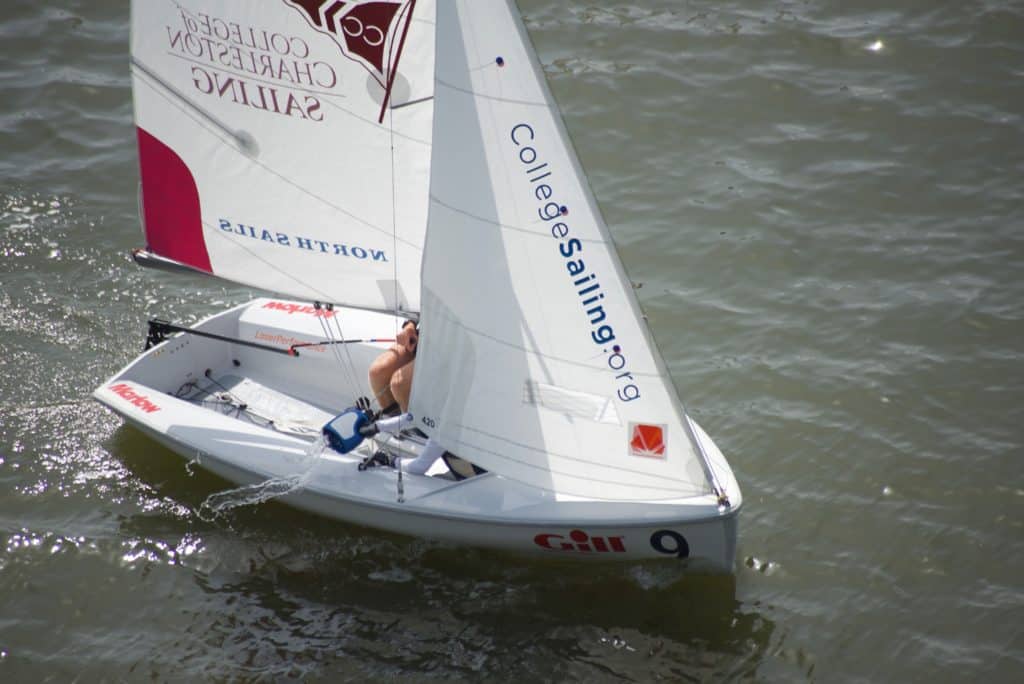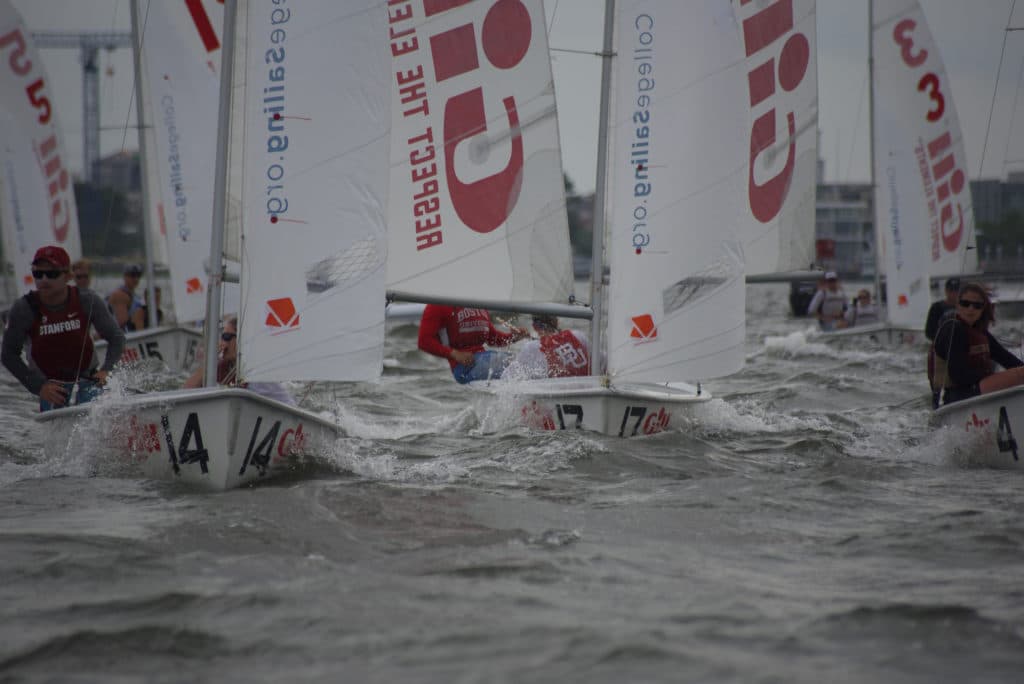
What if someone told you that you could improve your sailing by simply sitting down this weekend and performing one simple exercise? It involves no risk; it’s free and only requires a little time. Sounds too good to be true, doesn’t it?
Yet sailors, regardless of their respective skill level, are always looking for that edge over their competition. We are quick to spend money on new equipment and new sails, all in an effort to win races. Yet, a simple investment of time this weekend could lead you to a guaranteed, measurable improvement
of your performance this summer on the racecourse.
Athletes know that goal setting is essential for making consistent progress in their athletic performance, because goals provide direction. The primary reason for goal setting is to provide the motivation and commitment to improve one’s personal athletic performance. A goal serves to remind you where you are going and how you plan to get there. Successful sailors who use goal setting choose their goals carefully. They consider time constraints and other responsibilities, such as school, work, and family, when setting their priorities. They are also realistic and understand that it takes both time and effort to achieve a goal.
The term “goal setting” is familiar to everyone and most people have a basic understanding of how to set goals. Talk to any sailor and they will quickly state that they “dream” of winning the Intergalactic Championship. Yet goals should be based on events within your control. Expecting to win a regatta implies that you have control over the performance of the entire fleet, which you do not. Such a prediction is a formula for frustration and failure. Goals should be used to enhance your own performance. Know what you are sailing for. More importantly, know how to get there. If you are S-M-A-R-T in your goal setting, the effect can be powerful.

Specific goals
Your goals should be clear, specific, and direct in nature, rather than general. This is the key to goal setting that most sailors do not understand. In order to develop a comprehensive training plan you must first perform a personal evaluation of every aspect of your program, down to the last detail. Remember the Six Ws—who, what, where, when, which, and why—and use them while evaluating both your weaknesses and strengths.
There are five areas of evaluation that are important to consider. They are as follows: Physical, Technical, Tactical, Psychological, and Organizational. By evaluating these areas, you can then design a plan of action, a positive framework for improvement. From your physical review you can create a strength
and conditioning program. A technical review develops improvements in boatspeed and boat handling. A review of tactical skills can create improvement in smart-sailing skills. A mental training program can be developed from a psychological review. Finally, an organizational review allows you to take care of many logistics preseason before they become a distraction during the racing season.
The objective of the performance evaluation is to develop “task” goals, the “baby steps” of improvement, which can lead you to the achievement of your “dream” goal, an outcome goal of winning that big regatta. For example, if you know you need better boat handling to win the Intergalactic Championship, one of your “task” goals may be to improve your spinnaker takedowns. How will you achieve that goal? Will you just go around the leeward mark a number of times? How many times? Or will you use drills? Will you use a dry-land walk through? Will you use a coach? Will you sail against another boat? Will you videotape?
The more detailed you can be in developing a method to achieve the “task” goal, the better your chances are that your takedowns will improve, and this improvement in boat handling will assist you in achieving your outcome goal of winning the championship.
Measurable goals
Once you set your goals and identify the areas of improvement, specify the desired result of improvement. Be clear and objective with these goals. Identify the desired result and specify how the result will be reached. Set a completion date and a way of measuring your progress. Using positive language, write down your goals. By writing your goals down and posting them where you can see them every day, you become accountable to these goals. Consider telling your goals to a teammate, a trusted friend, or a family member. Research has shown that athletes who make their goals public perform better than those who keep them private. Either way, the person selected can offer support as well as feedback during the training process.
Adjustable goals
You may have to adjust your goals during training. Our sport is dependent on the wind, or sometimes lack of wind. If you schedule a heavy-air practice session, but you find yourself sitting on the beach waiting for the breeze to build wondering what to do, make an adjustment to the plan. Get out on the water and work on another goal. Make the scheduled practice time count. Focus on the present, the here and now. Always allow for adjustments as they become necessary because of the weather, breakdowns, injuries, or simply because of either slower or great progress in your training.
Realistic goals
A goal needs to be as challenging as possible but realistic. A performance-based goal will only be achieved if you are honest in judging your own skills. An unrealistic goal will only lead to frustration and disappointment, while a goal that is too easy and immediately obtainable provides no sense of accomplishment. Be realistic about the amount of time and energy you can devote to your program. Don’t set up a program to be an Olympian when you only have enough time to be a weekend warrior. Remember the key to successful goal setting is to set goals that are obtainable, measurable, and flexible.
Timely goals
Set short-term goals, for today and the next couple of weeks. Set intermediate goals for the next few months, and set long-term goals for the year. Build in target dates for achieving these goals. Schedule and take part in regattas, clinics, or tuning sessions to measure your progress before that year-end championship. By creating deadlines, you give your goals a sense of urgency, which creates a sense of focus.
Your results will improve this year if you follow these steps to successful S-M-A-R-T goal setting, because they will foster individual commitment through promoting responsibility and accountability in your sailing. One last hint: always build some fun into your goal setting. Rather than always being fixated on an outcome goal, learn how to enjoy the process of getting better and improving your skills as a sailor. Commit yourself to your goals and work your hardest to achieve these goals. You may not achieve all, but at least you will have the satisfaction of knowing where you came from and what you achieved. You may even find that you enjoy the journey more than the destination.









